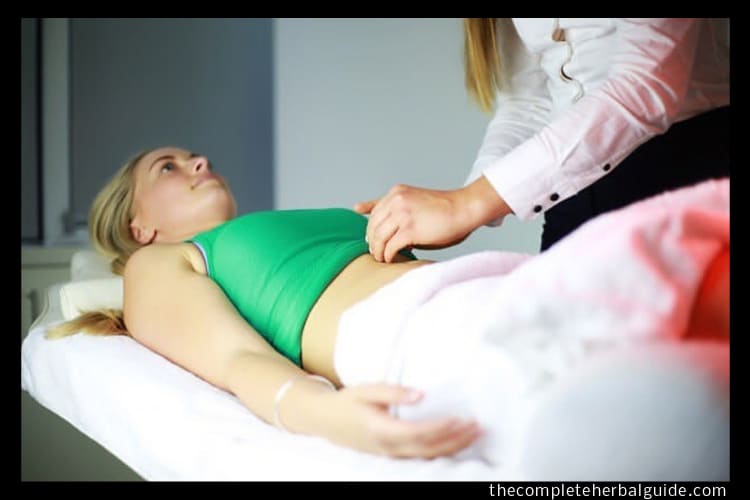
Benefits Of Acupuncture For Children
Figuring out how to keep your children healthy can be a daunting task. This includes avoiding the need for ear tubes, allergy shots, reflux medications, antibiotics and the like. For centuries, acupuncture has been a natural, safe and effective treatment for children and teens. Yet, most parents don’t realize how much it can help their children stay healthy. Unnecessary suffering could be avoided if this were to change.
In this article, you’ll learn and discover the benefits of acupuncture for children.
Table of Contents
Treatment
All treatments need to be provided as a complement to traditional Western medicine pediatric care. Of course, acupuncture treatment should not be provided as the primary treatment for life-threatening and more serious pediatric illnesses. However, acupuncture provides a viable complementary treatment option for children.
It is thus essential for parents to become better informed about possible treatment options for their children to provide them with the best possible healthcare and positive results.
This will take time for this to develop, although it is fast approaching. More and more physicians, allied health professionals and lay people are discovering the healing power of acupuncture in the United States, following it being well-established, respected and accepted healthcare method practiced throughout the rest of the world.
Acupuncture
Acupuncture is a form of Chinese medicine approach that views the existence of symptoms or dis-ease as a result of the body being out of balance. The basis is the concept of Qi (pronounced ‘chee’), a vital energy that flows through meridian pathways traversing within the human body.
The existence of blockage or deficient Qi flow within these pathways leads to energy imbalance and ill health. Acupuncture treatments are utilized to restore health by removing Qi blockages where the excess exists and strengthening Qi flow where there is a deficiency.
An acupuncturist determines a Chinese diagnosis during an initial consultation to establish which meridian needs balancing to restore health to the body. This is accomplished by the taking of a thorough medical history, which involves questions about the child’s habits along with a practitioner’s evaluation of their constitution, tongue and pulse diagnosis.
An acupuncturist gathers data and analyzes presenting symptoms and signs to determine a Chinese medicine diagnosis and treatment strategy. A typical treatment protocol is 10 to 15 sessions, which are received over several months. Such specifics are determined on an individual basis depending upon a child’s health status, date of onset, frequency and severity of symptoms.
Upon completion of a series of treatments, a re-evaluation is conducted to determine the need for additional courses of treatment.
Common Conditions Children Are Treated For…
- Chronic Ear Infections
- Migraines
- Allergic Reactions
- Digestive Disturbance
- Acute
- Chronic Pain
- Athletic and Dance Injuries
- Asthma
- Chronic Colds or Flu
- Obesity
- Chronic Fatigue Syndrome
- Failure to Thrive
- Migraines
- ADHD
These are some of the more common pediatric problems that acupuncture is used successfully to treat. A child could also be treated with acupuncture for health maintenance during the change of seasons. Children respond quickly to treatments as compared to adults.
The role that a parent plays has a direct impact on their child’s retrieval of balance and health through acupuncture. According to Chinese medicine, a child’s constitution and level of vital energy is determined before birth during the first few months of pregnancy.
Based on the Five Element Theory, a child’s health is dependent on the physical and emotional health of their parents. A common practice for an acupuncturist is thus “to treat the mother to treat the child.” This is actually the ideal situation to speed healing for both the child and the mother mentally, physically and emotionally as their Qi becomes balanced and strengthened.
Chinese medicine views on pediatric diagnosis and treatment strategy
Stomach and spleen energy
This governs transportation and transformation of food, is more delicate and weak in children. This means that treating the stomach and spleen meridians can treat many problems effectively, as it is at the root of many pediatric problems.
Liver energy
This governs free flow of Qi, is often out of balance for children. This means that treatment needs to be directed toward rebalancing the liver meridian when a child exhibits deficient Qi symptoms. It is also helpful for a child who exhibits significant bursts of anger because anger is the emotion associated with the liver meridian.
Blood and Qi converge in the hands and feet of young children
This means that it is an excellent area to treat for good results.
Yin aspect is insufficient in children
This means that a child’s yin energy would need to be strengthened. Yin refers to the more internal aspects of the body.
A child’s vital organs are fragile, soft, clear and spirited. Therefore, an acupuncturist should choose acupoints that would strengthen the Qi of the vital organs, especially the ones associated with the symptoms expressed.
Children get sick easily and become serious quickly, which means that acupuncture treatment needs to match the energy of the child. The parent or child shouldn’t be surprised if a symptom such as a fever happens quickly or a rash becomes more evident right after a treatment. This is a child’s way of healing from the inside out.
Acupuncture strengthens a child’s Qi flow and provides the impetus for symptoms to be flushed out immediately and completely.
Children regain their health easily and quickly.
Visiting an acupuncturist provides a distinct possibility for a forward step in a child’s healing process. It’s best for a child to have their initial consultation without their siblings present as it provides special alone time with a parent. What can’t be easily expressed at home can be easily verbalized in the presence of a compassionate acupuncturist.
A child also responds favorably to the energetic paradigm of Chinese medicine, often providing the necessary awareness of their healing potential, sparking their healing process in a spontaneous manner. Whereby, a future visit to the acupuncturist becomes a favorite of the child.
This is strengthened even more when the parent comes to support the process, which in many cases provides much needed alone time for child and parent. Although, some children prefer to receive their treatments alone, enjoying it as an independent experience. Still, others come for treatments with their entire family as each one takes turns getting up on the treatment table, mom or dad included.
Prior to the age of eight, the acupuncture needles are inserted and retained for a brief moment, then taken out. After the age of eight, the needles can be retained longer, up to approximately twenty minutes in duration. Acupuncture is surprisingly painless.
In fact, many children giggle the first time they receive a treatment. It is not uncommon for a baby to clap when they see the acupuncture needle package being opened. Other babies have asked for more, as the treatment was provided. This was expressed through the sign language on one occasion. This is a display of their knowing intuitively that acupuncture is going to be of help to them.
Conclusion
Acupuncture is an excellent treatment choice to help children maintain health and wellness. In addition to, being a viable way for them to regain their health after a multitude of physical, emotional and energetic issues. It prods a child to bring their bodies back to balance as it maximizes their innate healing capability.
It empowers them to resolve their health issues – teaching a child that their bodies heal themselves. This provides an awareness that they can turn to the rest of their life.








